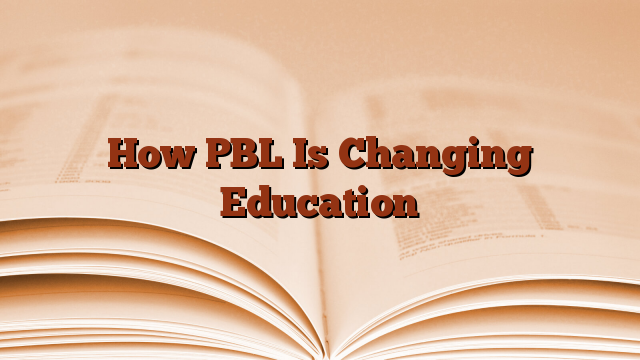How project-based learning units are changing the way our students are taught
Many educators firmly believe that what worked in the classroom a decade ago—or more—doesn’t necessarily have the same effect on the learning environment in today’s classroom. Times have changed, and researchers are finding that today’s educational institutions and students need to add something to the classroom to make their educational experience more relevant to today’s world.
Why should things change?
Students should no longer just have to take notes and remember a set amount of information provided during a study session. Such almost “mindless” learning does not necessarily prepare them for post-graduation assignments, nor does it adequately prepare them for work and real-world situations. Because of this, project-based learning is increasingly being used as a resource to provide our children with valuable information and lessons, better preparing them for life after high school as functioning adults in a work environment.
Why PBL?
Although project-based and problem-based learning have been around since Aristotle, modern project-based learning originated in the 1960s by a team of colleagues at McMaster University Medical School. These colleagues observed how frustrated medical students felt in their early college years and how little they devoted themselves to their work. To change the usual way of learning, project-based learning was introduced to help these students become much more interested, engaged and involved in their projects.
Students involved in project-based learning were divided into small groups where, based on their collaboration and teamwork, they had to find a solution to their assigned problem. This type of platform provided students with an opportunity to work collaboratively as a team, practice their critical thinking skills, and essentially become problem solvers.
These valuable skills are vital in the real world.
Students in elementary and secondary schools can also benefit from PBL in the classroom in a number of ways, including the development of:
- Communication skills at a high level
- Information retrieval skills
- Brainstorming – Imagination – Brainstorming
- The ability to think critically
- The ability to apply new information
- The ability to use the information gathered to arrive at a solution to the problem
- Collaboration Skills
- presentation experience
How teachers are affected by PBL
For teachers, they are no longer just dictators of information to students, but facilitators and guides. You no longer just stand in front of the classroom and hope that at least some of the students are paying attention. With the advent of project-based learning, teachers take on a role as mentors and facilitators, allowing them to suggest resources, guide progress, and monitor progress. When teachers see their students become more engaged and interested in their work, their work becomes all the more rewarding.
For teachers interested in learning more about it project based learning, they can visit the PBL Superstore and learn more about the history, benefits and results. PBL is also ideal for homeschooled students. Because preparing, testing, and grading projects can be overwhelming; Teachers may want access to pre-built units that they can immediately implement in their classroom. The PBL Superstore has projects for grades K-10 available for download. Research shows that the introduction of project-based learning stimulates student engagement, and many schools have now made PBL a core part of the curriculum.
Thanks to Samantha E Stewart | #PBL #Changing #Education

Leave a Reply